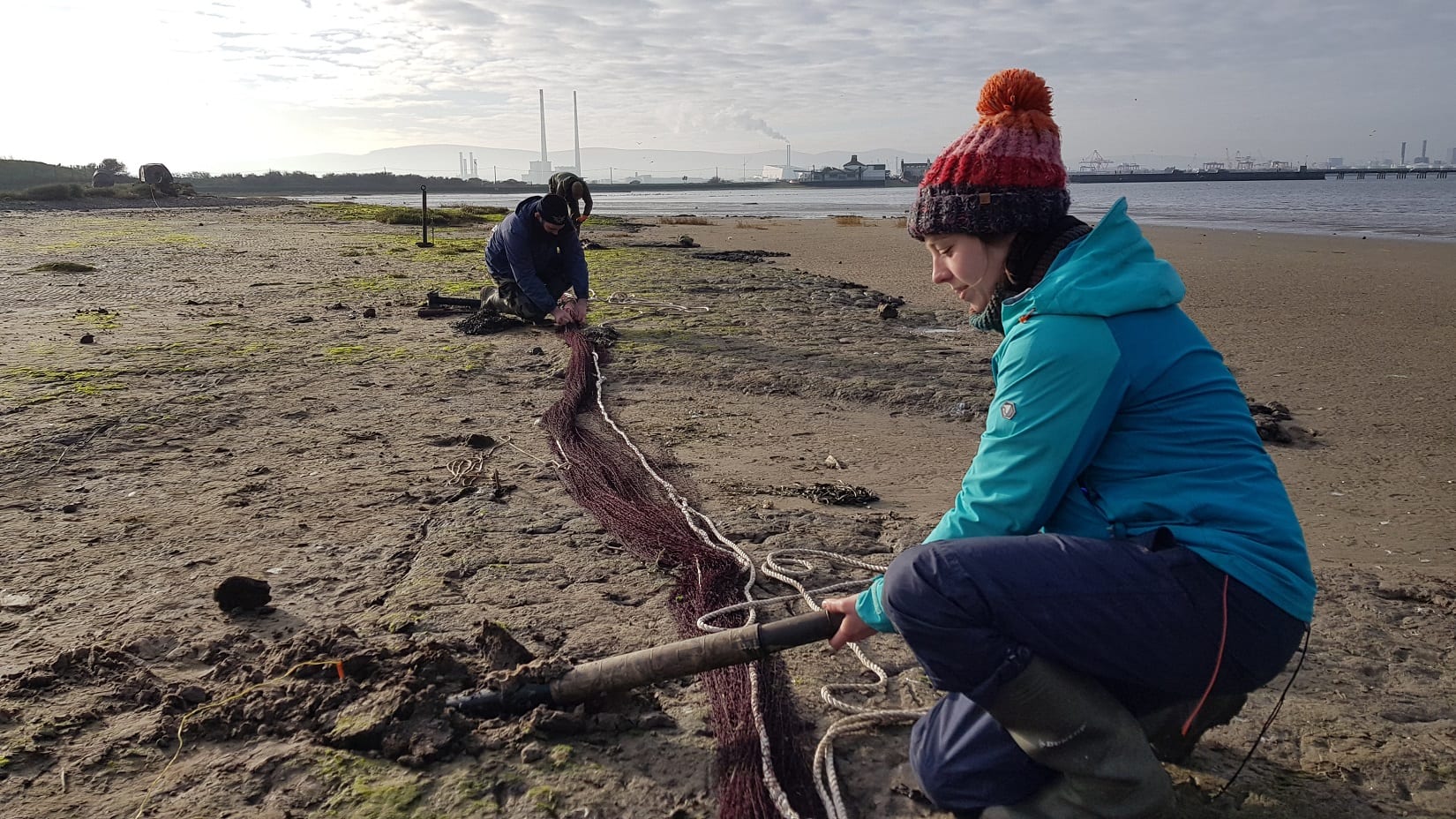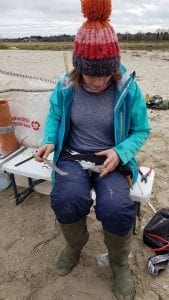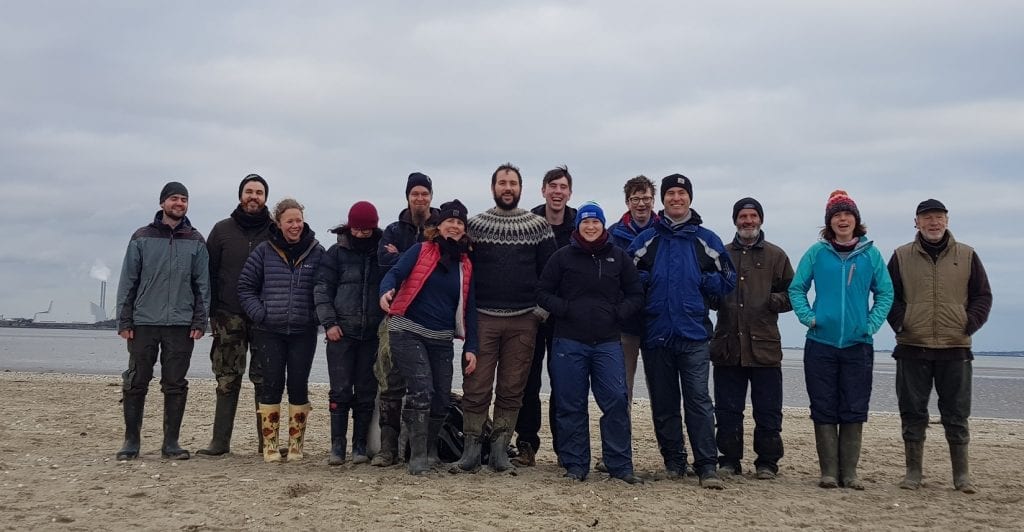In January 2020, the Dublin Bay Birds Project Team put in a huge effort to fit colour-rings (safely, and under license) to the legs of a portion of the wintering waders in Dublin Bay. Over four days and nights, we caught and ringed 235 waders of 6 species, with 23 ‘re-trapped’ birds, two of which were Icelandic-ringed Oystercatchers! The precise tally is 199 Oystercatchers, 23 Black-tailed Godwits, 5 Redshank, 4 Dunlin, 3 Curlew, and 1 Knot.
We used a highly specialised technique called ‘cannon-netting’ (firing a large net outwards using weighted projectiles propelled from cannons) to capture the birds. To do this, we 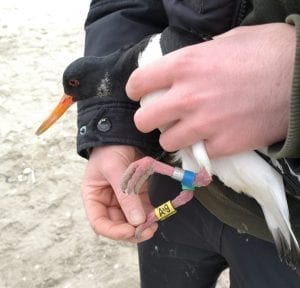
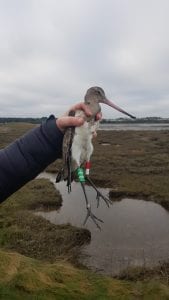
The colour-ring schemes for all waders are registered with a strictly controlled system co-ordinated by the International Wader Study Group. This ensures that every scheme is unique and that no two birds of the same species could ever be fitted with the same combination of rings anywhere across its flyway. This allows every bird to be individually identifiable making the resultant data exceptionally useful.
Essentially, the fitting of colour-rings to the legs of these wintering waders in Dublin and the subsequent reading and reporting of them (and similarly the fitting of small GPS-devices to birds) is 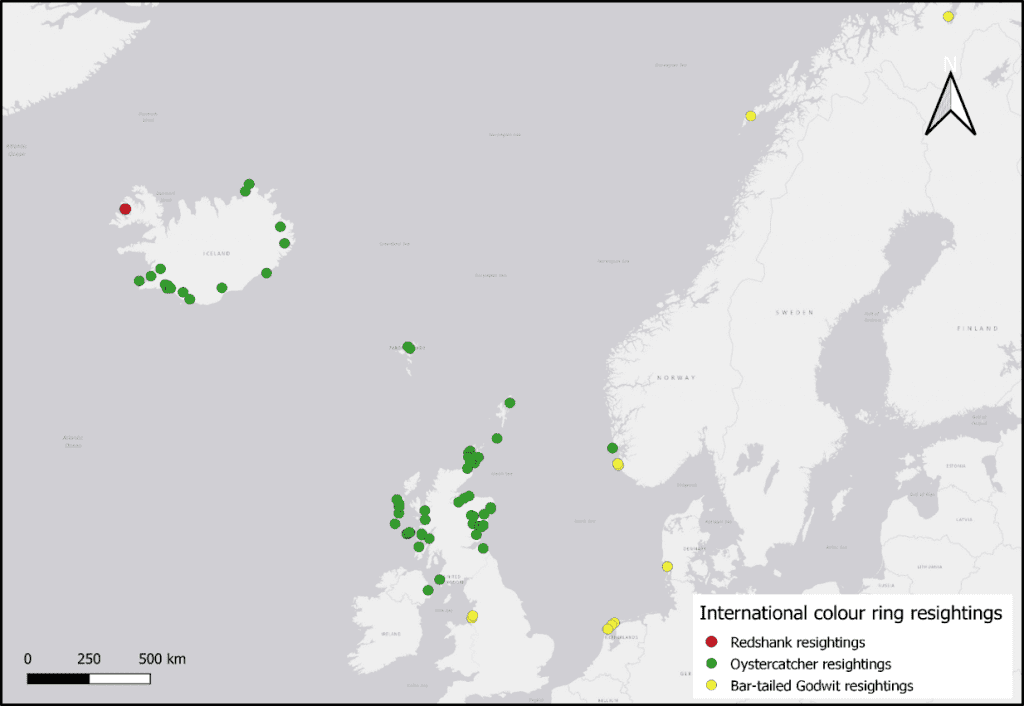
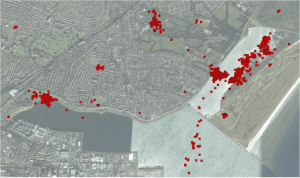
In addition to the valuable data generated by marking and tracking birds, valuable connections and collaborations with scientists and ring-readers across the flyways of these waders are created. Our January activities have crossover with several international projects. This summer, we expect that some of our marked Oystercatchers will be observed in Iceland by the Icelandic Oystercatcher Team (University of East Anglia, South Iceland Research Centre, University of Iceland), in the same way that we see Icelandic-ringed birds in Dublin Bay. This nice blog ‘Wader Tales’ by Graham Appleton summarises some of the Icelandic work and its connections with Ireland.
And one of the Dublin-ringed Oystercatchers ‘XN’ has already been seen on its breeding ground in Scotland (5TH February 2020) by our valuable observer John Bowler of the RSPB … the fourth year in a row!
Ongoing international projects on Black-tailed Godwits and Knot allowed us to borrow and deploy their colour schemes on the 23 Black-tailed Godwit and single Knot that we caught in January, with thanks to Pete Potts (UK) and Jim Wilson (Norway), respectively for allowing us to use those. We hope the resightings to come from these birds across the flyway will enhance on-going work for these researchers.
The January 2020 cannon-netting was a massive effort by a brilliant team (just some of which is pictured below). In particular, thanks to our super-skilled cannon-netters, Ewan Weston and Kenny Graham, for parachuting in for the few days to put their skills and gear to great use, and to Kendrew Colhoun for key logistical support and assistance with licensing and equipment. There was also a huge effort from dawn ‘til dusk by an outstanding and enthusiastic team of volunteers, licensed ringers, NPWS and BirdWatch Ireland to get it all done. It was a great, and really quite rare, opportunity for the team to get to see several species of wader up so close.
Now the work is to go out and look for all of these colour-ringed birds, read those inscriptions and submit them to us!
Submit your resightings HERE!
The Dublin Bay Birds Project is very lucky to be supported by Dublin Port Company who keenly recognise the value of this work and the data it generates.
This work was carried out under license from the National Parks and Wildlife Service and the British Trust for Ornithology.

